Oregon, at the mouth of the Columbia River, has a storied history of forts that played crucial roles during various eras, including World War II. These forts, now often managed by Oregon State Parks or considered National Historic Sites, have witnessed the transformation of the Pacific Northwest.
In this article on historic forts in Oregon, we will explore many of these historically significant forts and the stories behind them.
10 Historic Forts in Oregon
| 1. Fort Astoria (Fort George) | 6. Fort Klamath |
| 2. Fort Lane | 7. Fort Harney |
| 3. Fort Stevens State Park | 8. Fort Canby |
| 4. Fort Dalles | 9. Fort Hoskins |
| 5. Fort Clatsop | 10. Fort Yamhill |
1. Fort Astoria (Fort George)
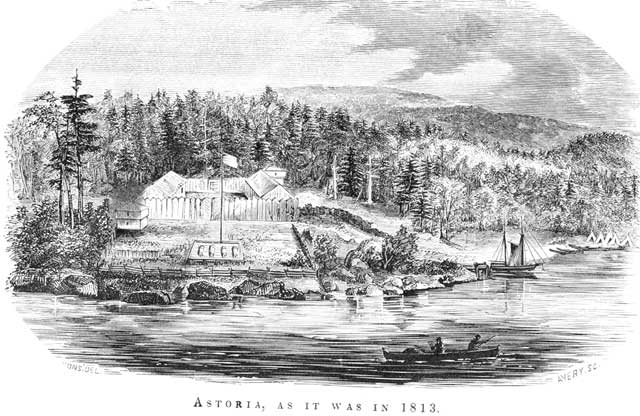
Located close to the Pacific Ocean, Fort Astoria was established in 1811 by John Jacob Astor’s Pacific Fur Company. Its strategic position made it a pivotal point for transcontinental trade and exploration during the early 19th century.
Under the patronage of John Jacob Astor, Fort Astoria rapidly became a key hub for fur trading during the early 1800s. Its connections extended not just because of its geography but also due to the strategic alliances Astor’s company formed with indigenous tribes and foreign traders.
The British Takeover and Renaming
In 1813, the British North West Company bought the fort during the War of 1812 between Britain and the United States. Consequently, they renamed it Fort George in honor of King George III.
By 1818, after the war, the fort was returned to American control through the Treaty of 1818, although the name Fort George persisted for some time. Over the years, the fort witnessed a series of structural and administrative changes reflecting its tumultuous history.
Stepping into Modern Times: Preserving the Legacy
Today, Fort Astoria serves as a vibrant reminder of its storied past.
- Visitor Center: Modern tourists begin their journey at the visitor center, which offers detailed insights into the events that transpired between its walls. This includes the fort’s foundation by Astor, its takeover by the British, and its eventual return to American hands.
- Interpretive Center: This center provides a comprehensive view of life during the fort’s prime. It showcases the fur trade dynamics, cultural interactions, and pivotal moments, ensuring that names like John Jacob Astor and the various stakeholders remain in public memory.
2. Fort Lane
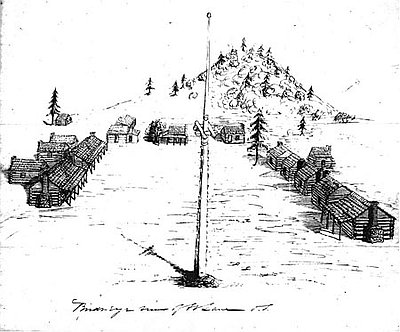
Fort Lane was established in 1853 in the Rogue Valley, near Jacksonville, Oregon. The fort was pivotal during escalating tensions and conflicts between Native American tribes and white settlers, notably during the Rogue River Wars of the 1850s.
Strategic Purpose and Role
The primary mission of Fort Lane was to act as an intermediary between local Native American tribes, especially the Rogue River Indians, and the encroaching settlers. The fort’s presence aimed to maintain peace and order, but it was also instrumental in enforcing U.S. government policies related to land rights and tribal relocations.
Key Personalities and Command
Captain Andrew Jackson Smith was among the notable figures who commanded Fort Lane. Under his leadership, the fort navigated the complex dynamics of frontier diplomacy, trying to mitigate tensions and foster peaceful resolutions. However, Smith’s tenure at the fort also saw it deeply embroiled in military actions during the Rogue River Wars.
Rogue River Wars and Military Action
The mid-1850s were marred by a series of confrontations known as the Rogue River Wars. While Fort Lane was initially envisioned as a peacekeeping establishment, it quickly became a strategic military base during these conflicts.
In 1855, one of the most significant confrontations occurred when a coalition of Native American tribes clashed with local militias and U.S. Army forces from Fort Lane.
Decommissioning and Legacy
With the end of the Rogue River Wars and the relocation of many Native American tribes to reservations, the need for Fort Lane diminished. The fort was officially decommissioned in 1856, three years after its establishment. While its operational history was brief, its impact on the region was profound.
Modern Recognition and Significance
Today, little remains of the original fort structures, but the site’s historical importance is commemorated by the Oregon Historical Society. The location is recognized as a historic site, with markers detailing its significance and the events that unfolded in its vicinity.
3. Fort Stevens State Park
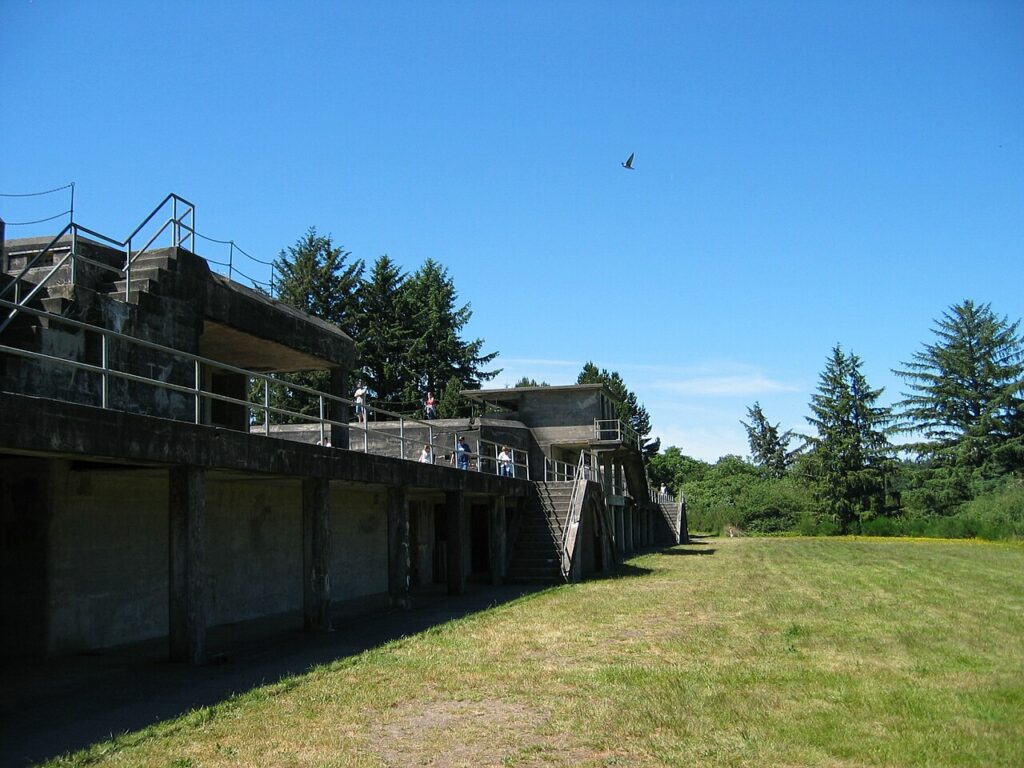
Situated at Point Adams, Fort Stevens State Park once held immense strategic importance. Established during the Civil War, it evolved over the years, and by World War II, it became the primary military defense installation on the West Coast. Its location made it a vital protective point against potential maritime threats.
The World War II Incident
A particularly memorable event during Fort Stevens’ military history occurred in 1942. A Japanese submarine, the I-25, fired shells toward the fort, marking the first and only time a military installation in the contiguous United States was attacked during World War II.
While the fort did not return fire and sustained no significant damage, the incident underscored the strategic importance of Fort Stevens during this tumultuous period.
From Military Installation to Recreational Park
Post-war, Fort Stevens transitioned from a military bastion to a serene recreational area. Covering a vast 4,300-acre landscape, the park has been transformed into a sanctuary for nature lovers and history buffs alike.
- Recreational Offerings: The park boasts various amenities to cater to all ages. With picturesque picnic tables and expansive picnic areas, visitors can enjoy a serene outdoor meal. The tranquil Coffenbury Lake, a freshwater lake within the park, offers opportunities for fishing and boating, making it a favorite spot for locals and tourists.
- Diving into History: For those intrigued by the park’s rich past:
- Information Center: The center provides insights into the park’s military and natural history. Interactive displays and knowledgeable staff ensure visitors leave with a deeper appreciation of the fort’s significance.
- Military Museum: A dedicated space for history enthusiasts, the museum houses various artifacts, photographs, and documentation from Fort Stevens’ days as a defense installation. The exhibits shed light on daily life at the fort, military strategies, and key moments like the Japanese submarine incident.
4. Fort Dalles
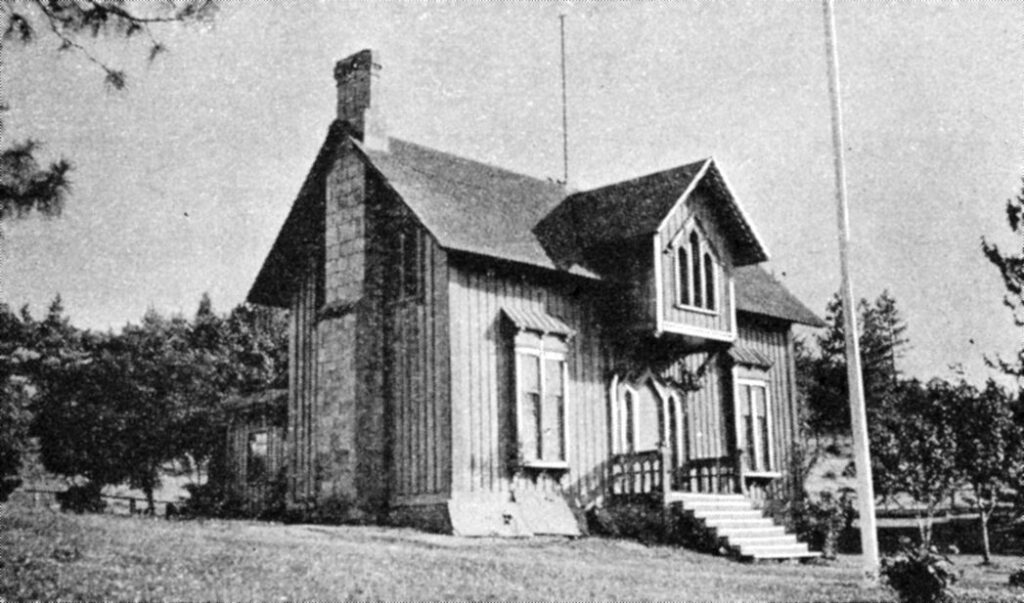
Nestled in Wasco County, Fort Dalles was strategically positioned to commemorate the western terminus of the Oregon Trail. This trail, stretching over 2,000 miles from Missouri to Oregon, saw thousands of pioneers make the arduous journey westward during the mid-19th century.
Establishment and Military Role
Named initially Camp Drum, Fort Dalles was established in 1850. It played a significant role during various Indian Wars, particularly the Yakima War between 1855 and 1858.
Under the command of officials like Major Tucker, the fort was pivotal in asserting the US government’s control in the region and aiding settler colonization.
Notable Engagements
While the fort witnessed various skirmishes and tensions during its tenure, one notable conflict was the Rogue River War in the mid-1850s. Fort Dalles served as a critical supply point and base for operations during this tumultuous period, which sought to confront and suppress Native American resistance to white encroachment.
Fort Dalles Museum: A Treasure Trove of History
The Fort Dalles Museum, instituted in the Surgeon’s Quarters built around 1856, is the oldest history museum in Oregon. Its vast collection encapsulates the essence of the pioneer era, military engagements, and the region’s indigenous cultures. Authentic artifacts, visual displays, and narrations provide an immersive journey through time.
5. Fort Clatsop
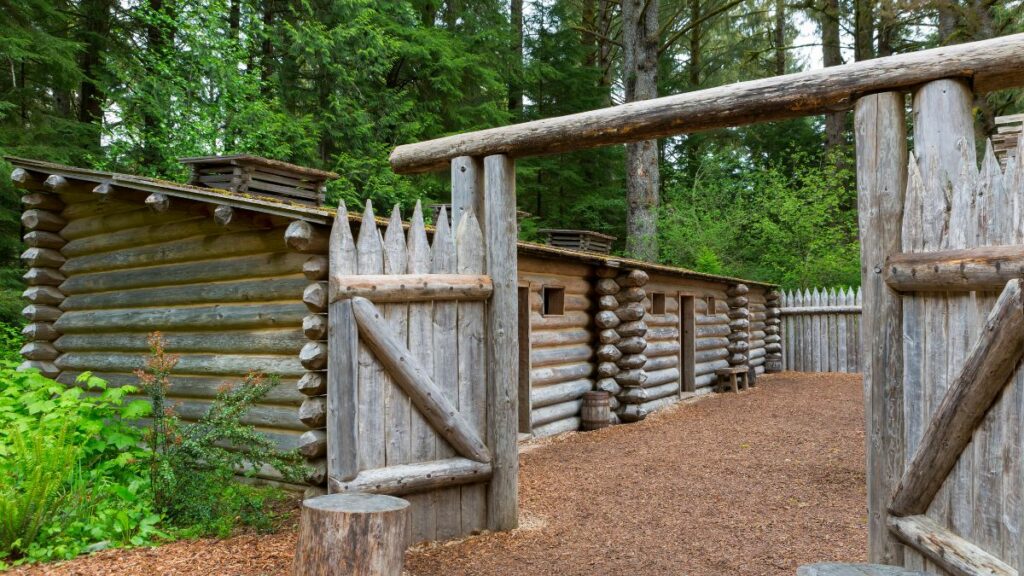
Fort Clatsop represents a pivotal chapter in the iconic Lewis and Clark Expedition. Situated near the mouth of the Columbia River in present-day Oregon, it was here that the Corps of Discovery, under Captains Meriwether Lewis and William Clark, spent the winter of 1805-1806.
After reaching the Pacific Ocean in November 1805, the expedition members realized the need for a more permanent shelter to endure the winter months.
Thus, Fort Clatsop was constructed in honor of the local Clatsop tribe with whom the explorers interacted. From December 7, 1805, to March 23, 1806, this modest log structure became their temporary residence.
While at Fort Clatsop, the expedition members busied themselves with various activities. They made salt from seawater, repaired equipment, hunted and trapped for food, and documented their findings. It was a time of reflection, healing, and preparation for their return journey.
Interactions with the Clatsop Tribe
During their stay, Lewis and Clark had multiple interactions with the native Clatsop tribe. These encounters were primarily peaceful and centered around trade.
The explorers obtained necessary supplies, such as animal pelts and whale blubber, in exchange for items like blue beads and other trade goods.
National Historic Landmark Designation
Recognizing its immense historical significance, Fort Clatsop was designated a national historic landmark. Today, it’s part of the Lewis and Clark National Historical Park.
Visitors can see a replica of the original fort, which provides a tangible insight into the lives of the expedition members during their winter sojourn.
6. Fort Klamath

Nestled in Klamath County, near the shores of the upper Klamath Lake, Fort Klamath played a strategic role in the mid-19th century Pacific Northwest.
Established in 1863, the fort was primarily positioned to ensure a military presence and facilitate communication routes during escalating regional tensions.
Role in Tribal Relations and Conflicts
Fort Klamath’s inception was rooted in the need for a military outpost to manage the rising tensions and conflicts with the indigenous Rogue River tribes.
The fort became a center for operations against the tribes, ensuring the U.S. government could exert control, negotiate treaties, and protect settler interests.
Throughout its operational history, the fort witnessed numerous skirmishes, standoffs, and peace-making endeavors. It played a critical role in the Modoc War of 1872-73, serving as a base for U.S. Army operations against the Modoc tribe, led by leaders such as Captain Jack.
Decline and Decommissioning
As tensions subsided and the U.S. government’s objectives were realized, the need for a robust military presence diminished.
By the late 19th century, Fort Klamath’s role in regional affairs had significantly decreased. The fort was eventually decommissioned in 1889, signaling the end of its active military history.
Preserving the Legacy
While the original structures of Fort Klamath no longer stand, their legacy is preserved and commemorated. Today, the fort’s exact location is marked with a stone monument, ensuring that its historical significance isn’t forgotten.
This monument silently witnesses the events, negotiations, and conflicts that swirled around the fort’s walls.
7. Fort Harney
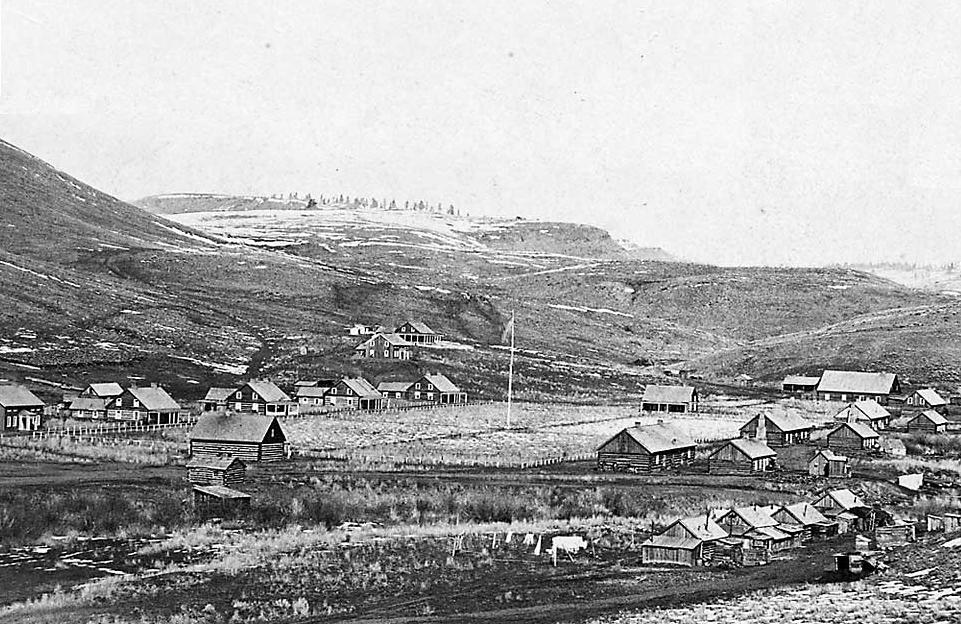
Nestled in the heart of Oregon’s high desert region, Fort Harney was established in 1867. This fort was positioned near present-day Burns and was a significant installation to assist with the U.S. government’s Indian policy during the latter half of the 19th century.
Strategic Purpose and Role
Fort Harney was primarily established to ensure peace between the settlers and the local Native American tribes, especially the Northern Paiute.
The region had been the scene of repeated skirmishes and confrontations, and the fort’s presence aimed to mitigate these tensions and foster a more peaceful coexistence. Furthermore, it played a role in facilitating the resettlement of the Northern Paiute onto reservations.
Key Figures and Leadership
While several officers and commanders passed through Fort Harney during its operational years, it’s essential to note the soldiers and their interactions with the indigenous people. Their actions, good and ill, shaped the legacy of the fort and its relation with the surrounding communities.
Challenges and Skirmishes
Throughout its existence, Fort Harney was at the forefront of numerous challenges. Disputes over land, resources, and cultural differences between settlers and the indigenous communities marked the region.
While the fort played a peacekeeping role, there were times when its soldiers were involved in confrontations with the Native American tribes.
Decommissioning and Aftermath
By the late 19th century, with the regional tensions considerably reduced and the primary objectives of the fort largely achieved, Fort Harney’s importance waned. The fort was decommissioned in 1880. The structures eventually fell into disrepair, and over time, the physical remnants of the fort faded.
Modern Recognition and Remembrance
Fort Harney’s original site has little left to showcase its once-prominent presence today. However, the legacy of the fort and its impact on Oregon’s high desert history is remembered through historical markers and documentation.
Efforts by historians and local communities ensure that the stories, both of conflict and reconciliation, remain a part of the region’s shared memory.
8. Fort Canby
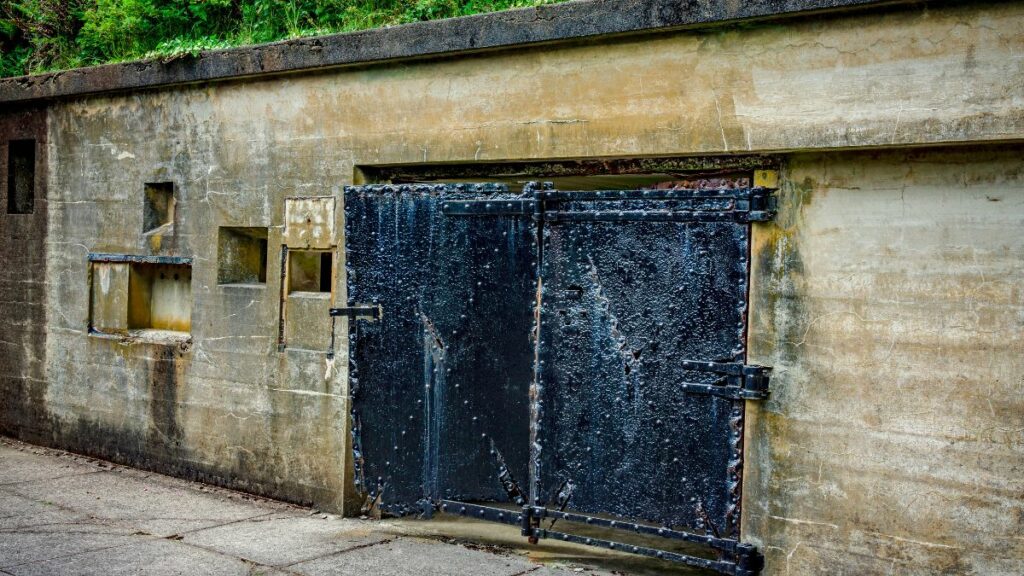
Perched at the strategic juncture where the Columbia River meets the Pacific Ocean, Fort Canby was an integral component of the U.S. coastal defense system.
Together with Fort Columbia in Washington and Fort Stevens in Oregon, Fort Canby formed a triad of military installations designed to protect the vital river mouth.
Established in 1863, it was initially known as Cape Disappointment because of the treacherous conditions mariners faced when navigating the river’s entrance.
Strategic Role in Coastal Defense
Throughout the late 19th and early 20th centuries, as global tensions and technological advancements influenced U.S. military strategies, Fort Canby was fortified and modernized to confront potential naval threats.
Boasting artillery batteries equipped with massive guns, the fort stood ready to challenge any maritime force approaching the Columbia River.
Although the guns of Fort Canby never engaged in battle, their presence served as a powerful deterrent and a testament to the nation’s commitment to safeguard its strategic points of interest.
World War II and Evolution
World War II ushered in an era of rapid technological advancements in warfare. Recognizing the changing dynamics, Fort Canby saw several upgrades to bolster its defense capabilities.
However, post-World War II, with the rising dominance of air power and the diminishing importance of traditional coastal fortifications, the relevance of Fort Canby began to wane. Consequently, the fort was decommissioned in the 1950s.
Preservation and Present-Day Status
Today, the legacy of Fort Canby is preserved within Cape Disappointment State Park. The park encapsulates the fort’s history, with several historic buildings and batteries still intact and open to the public.
Visitors can journey through time, exploring the intricacies of coastal defense tactics, witnessing the artillery placements, and understanding the life and routines of soldiers stationed there.
The park’s location also offers breathtaking views of the Pacific Ocean and the Columbia River, making it a haven for both history enthusiasts and nature lovers.
9. Fort Hoskins

Fort Hoskins was an essential military outpost during the mid-19th century in the heart of Oregon’s Willamette Valley.
Established in 1856, its primary purpose was to oversee the Coast Indian Reservation and maintain peace between Native American tribes and the influx of white settlers during a rapid westward expansion.
Mission and Military Role
Unlike many other forts built as defenses against potential external threats, Fort Hoskins was primarily designed for a peacekeeping role within the state.
The U.S. Army recognized the potential tensions that could arise with the relocation of tribes to reservations and the continuous encroachment of settlers on indigenous lands.
Under the command of Captain Christopher C. Augur, Fort Hoskins played a vital role in ensuring the successful transition and mitigating conflicts between Native Americans and settlers.
Daily Life and Operations
Life at Fort Hoskins reflected frontier military life. Soldiers engaged in drills maintained the fort’s infrastructure, and patrolled the surrounding areas. The fort was also a center for community gatherings, fostering interactions between the military, settlers, and indigenous populations.
Decommissioning and Subsequent Use
As tensions subsided and the region stabilized, the necessity for a military presence like Fort Hoskins diminished. The fort was decommissioned in 1865, nine years after its establishment. Over subsequent years, the fort’s buildings were used for various civilian purposes, including farming.
Preservation and Modern Day
While time took its toll on the fort’s original structures, efforts have been made to preserve its legacy. Today, the Benton County Parks Department oversees the Fort Hoskins Historic Preserve. Visitors can explore the remnants of the fort, walk interpretive trails, and participate in periodic reenactments and events that bring the fort’s history to life.
10. Fort Yamhill

Located in the lush landscape of Oregon’s Willamette Valley, Fort Yamhill represented an essential chapter in the military and cultural narrative of the Pacific Northwest during the mid-19th century.
Established in 1856, the fort was among a series of military installations, including Fort Hoskins, built to oversee and manage the newly formed Grand Ronde Indian Reservation.
Purpose and Strategic Role
The primary mission of Fort Yamhill was to monitor and support the relocation of Native American tribes to the Grand Ronde Reservation, ensuring their safety and, simultaneously, keeping peace between the indigenous populations and the burgeoning number of settlers arriving in Oregon.
This transitionary period was fraught with potential tensions, and forts like Yamhill were considered critical in mitigating conflicts.
Military Operations and Daily Life
Under the initial command of Lieutenant Philip Sheridan, who would later become a significant Civil War general, soldiers at Fort Yamhill performed a range of duties.
These included overseeing relocation, patrolling reservation boundaries, and enforcing federal policies. Beyond these responsibilities, soldiers engaged in routine military drills maintained fort facilities, and occasionally interacted with settlers and tribal members, forming a unique socio-cultural milieu.
Decommissioning and Post-Military Era
By the mid-1860s, the perceived need for Fort Yamhill began to wane. With reduced tensions and the region’s increased stabilization, the fort was decommissioned in 1866. Over the following years, much of the fort’s land was repurposed for civilian activities, particularly agriculture.
Preservation and Present-Day Significance
Today, efforts have been made to ensure the preservation of Fort Yamhill’s historical significance. The site has transformed into the Fort Yamhill State Heritage Area, managed by the Oregon Parks and Recreation Department.
Visitors can explore the remnants of this frontier outpost, including restored structures, interpretive trails, and informative exhibits that detail the fort’s history and relationship with the Grand Ronde community.
Related: 10 Historic Forts in Pennsylvania
Modern-day Significance of Oregon’s Forts
Historical Tourism and Recreational Hubs
Oregon’s historic forts have evolved into much more than mere relics of the past. Sites like Fort Stevens State Park are now bustling hubs for recreational activities and historical tourism.
While the walls and remnants of these forts echo tales of strategic defense, tribal interactions, and frontier challenges, they are also equipped with modern amenities, such as boat ramps, picnic areas, and group tour facilities.
These conveniences attract many visitors, from history buffs eager to immerse themselves in Oregon’s rich past to families and adventure seekers looking for an enjoyable day in nature.
Educational Significance
The forts also play an indispensable role in the state’s educational landscape. Visitors receive comprehensive insights into the Pacific Northwest’s complex history through organized tours, interpretive centers, and curated exhibits.
Schools often organize field trips to these sites, ensuring that younger generations grasp the significance of these historic landmarks and understand their context within the broader narrative of U.S. history.
Economic Impact
The transformation of these forts into tourist destinations has had positive economic repercussions for Oregon. The influx of domestic and international tourists contributes significantly to the local economies. Surrounding areas benefit from increased business in lodging, dining, and other ancillary services.
Preservation Efforts and Cultural Importance
Organizations such as the Oregon Historical Society, alongside local communities, have taken on the mantle of guardianship for these historic sites.
Their commendable efforts in restoration, conservation, and promotion ensure that these forts remain not just standing but also relevant. Special events, reenactments, and other cultural activities frequently occur at these sites, further solidifying their position as vital cultural touchstones.
Conclusion – Historic Forts in Oregon
From the establishment of original earthen forts by fur traders in the Oregon territory to the complex command center setups during World War II, Oregon’s forts reflect the broader history of the United States.
So, remember the centuries of stories they encapsulate the next time you are at an interpretive center, a historic shipwreck site, or picnic tables by a lake in one of these historic forts.
If you have visited these forts, please tell us about your experience in the comments below.

Cory is a website owner and content creator who enjoys fishing, history, coin collecting, and sports, among other hobbies. He is a husband and father of four.
Romans 15:4 For whatever was written in former days was written for our instruction, that through endurance and through the encouragement of the Scriptures we might have hope.

